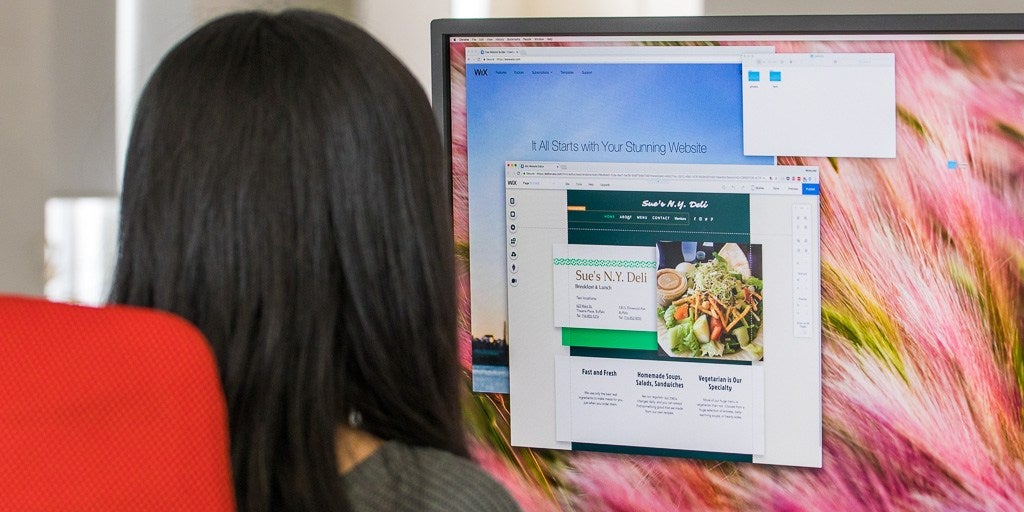STEP 1 – Choose Your Blog Topic
The very very first thing you would like to try to do is to choose a subject for your blog.
Most successful blogs specialize in one thing. May it’s food, travel, fitness, fashion, or just about your business.
We recommend choosing a subject that you simply feel hooked in to or curious about. It’s even better once you are an expert at something, this helps you to grow your blog through writing good, quality content to assist others.
Tips for selecting a blog topic:
Are you an expert in something?
Are you hooked on something?
Are you learning something new and need to write down about your process?
Here’s an example: If you’re highly curious about fitness and you wish to coach, it’s knowing to share your wisdom during a blog that’s associated with fitness or cover topics on training and nutrition. Through the blog, you’ll be ready to get new clients.
Click here for the best online website builder
STEP 2 – Find the proper Blogging Platform
First, Decide – Free Blog or Self-Hosted Blog?
Anyone can check in with a free blogging site or platforms like Blogger.com, WordPress.com, and Tumblr.com
However, if you’re serious about blogging, the free blogging platform isn’t how to travel.
There are many cons and drawbacks of a free blogging service (limited monetization, customization, and traffic), but most significantly – you’ll haven’t any control over your blog.
And if you would like to upgrade, you’ll get to pay quite you ought to.
The solution for this is often to host your blog yourself (have a self-hosted blog).
In that way, you’ll haven’t any limitations associated with your blog content (such as images and videos). Your blog will look more professional, better looking, and maybe improved afterward. Plus, you really own your blog.
Of course, if you don’t decide to blog for quite a couple of weeks, a free blog might add up. In every other case, we recommend the self-hosted route.
STEP 3 – found out Your Blog Through Web Hosting (and Register Domain Name)
To get started with a self-hosted WordPress blog, you’ll be getting to need a website name and web hosting.
We’ve been recommending Bluehost as a blog/web hosting and domain registrar for years.
From Bluehost, you’ll get (account gets activated instantly):
Custom name (free for the first year), with SSL certificate (security).
Website hosting ($2.75/mo+)
Simple, one-click install for WordPress
Free email accounts, like [email protected]
Of course, you don’t get to use Bluehost, especially once you have already got an internet host.
Whichever hosting company you select, confirm it’s “one-click installs” for blogging platforms like WordPress. this may make your found out process much easier.
If you grind to a halt registering a website name and signing up for Bluehost, below may be a quick step-by-step guide that we made.
STEP 4 – Configure Your WordPress Blog
Once you’ve got your admin account for WordPress ready up (the previous step), you’ll proceed to go to your new dashboard:
Just attend yourdomain.com/wp-admin and input the access details for your admin account.
This is where you’ll set:
“Site Title” – effectively the name of your site. The title is especially important since it’s what every visitor sees first, and also an enormous part of how search engines determine your rankings. confirm that you simply have your business name there.
“Tagline” – consider it because of the summary of what your blog is about, in one short sentence. For example: “Recipes that even a beginner cook can handle.”
In this section, you’ll also check if your blog address (URL) is so as, set the timezone you’re in, and your preferred language.
STEP 5 – Design Your Blog By Choosing a topic
Another great point about WordPress is that albeit you would possibly not be a talented designer yourself, you’ll still get a top-shelf search for your blog.
How? because of thousands of WordPress themes that are available out there online. better of all, many of them are free, and you’ll customize them easily (without any coding knowledge).
STEP 6 – Add Logo, Change Colors and Structure
Even though the WordPress theme that you’ve decided to use already comes with its specific pre-configured design, you’ll still change parts of it to your liking.
Depending on your current theme, you’ll get a special set of options within the sidebar menu, but the foremost common ones will include:
“Site Identity” – this is often where you’ll set your blog title again, plus add a logo image and a site icon (aka. favicon).
“Colors” – for adjusting the essential colors used throughout the planning.
“Header” – for setting your header graphic or image.
“Background” – for setting your background graphic, image, or color.
“Menus” – more on this afterward.
“Widgets” – more on this afterward also.
And other, theme-dependent settings.
Click here to know how do you make a website
STEP 7 – Add/Write New Blog Posts and Pages
With all of the above already done, you’re able to start creating content for your new blog.
If you’re building a blog, you’ll likely need a minimum of a number of the subsequent pages:
Blog – this one section WordPress creates for you automatically. By default, all of your latest blog posts are getting to be listed right on the homepage.
About – to inform your visitors what the blog is about and who’s behind it.
Contact – to let people contact you directly.
Services / Products – to list your products and/or services and tell people why they ought to buy them.
Testimonials – from your previous customers.
Portfolio – your body of labor presented in a beautiful way.

